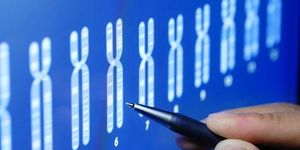Bacteria have been making hydrogen for billions of years, and now scientists are using radical chemistry in an effort to make hydrogen, too.
In a study published in the journal
Science, chemists describe a key step in assembling a hydrogen-generating catalyst.
“It’s pretty interesting that bacteria can do this,” says David Britt, professor of chemistry at University of California, Davis, and co-author on the paper. “We want to know how nature builds these catalysts—from a chemist’s perspective, these are really strange things.”
The bacterial catalysts are based on precisely organized clusters of iron and sulfur atoms, with side groups of cyanide and carbon monoxide. Those molecules are highly toxic unless properly controlled, Britt notes.
The cyanide and carbon monoxide groups were known to come from the amino acid tyrosine, Britt says.
Jon Kuchenreuther, a postdoctoral researcher in Britt’s laboratory, used a technique called electron paramagnetic resonance to study the structure of the intermediate steps.
They found a series of chemical reactions involving a type of highly reactive enzyme called a radical SAM enzyme. The tyrosine is attached to a cluster of four iron atoms and four sulfur atoms, then cut loose leaving the cyanide and carbon monoxide groups behind.
“People think of radicals as dangerous, but this enzyme directs the radical chemistry, along with the production of normally poisonous CO and CN, along safe and productive pathways,” Britt says.
Kuchenreuther, Britt, and colleagues also used another technique—Fourier Transform Infrared—to study how the iron-cyanide-carbon monoxide complex is formed. That work will be published separately.
“Together, these results show how to make this interesting two-cluster enzyme,” Britt says. “This is unique, new chemistry.”
James Swartz, professor of chemical engineering and bioengineering at Stanford University, contribute to the work, which was supported by grants from the US Department of Energy.
Source:
UC Davis
This article was originally published on
futurity.org.









